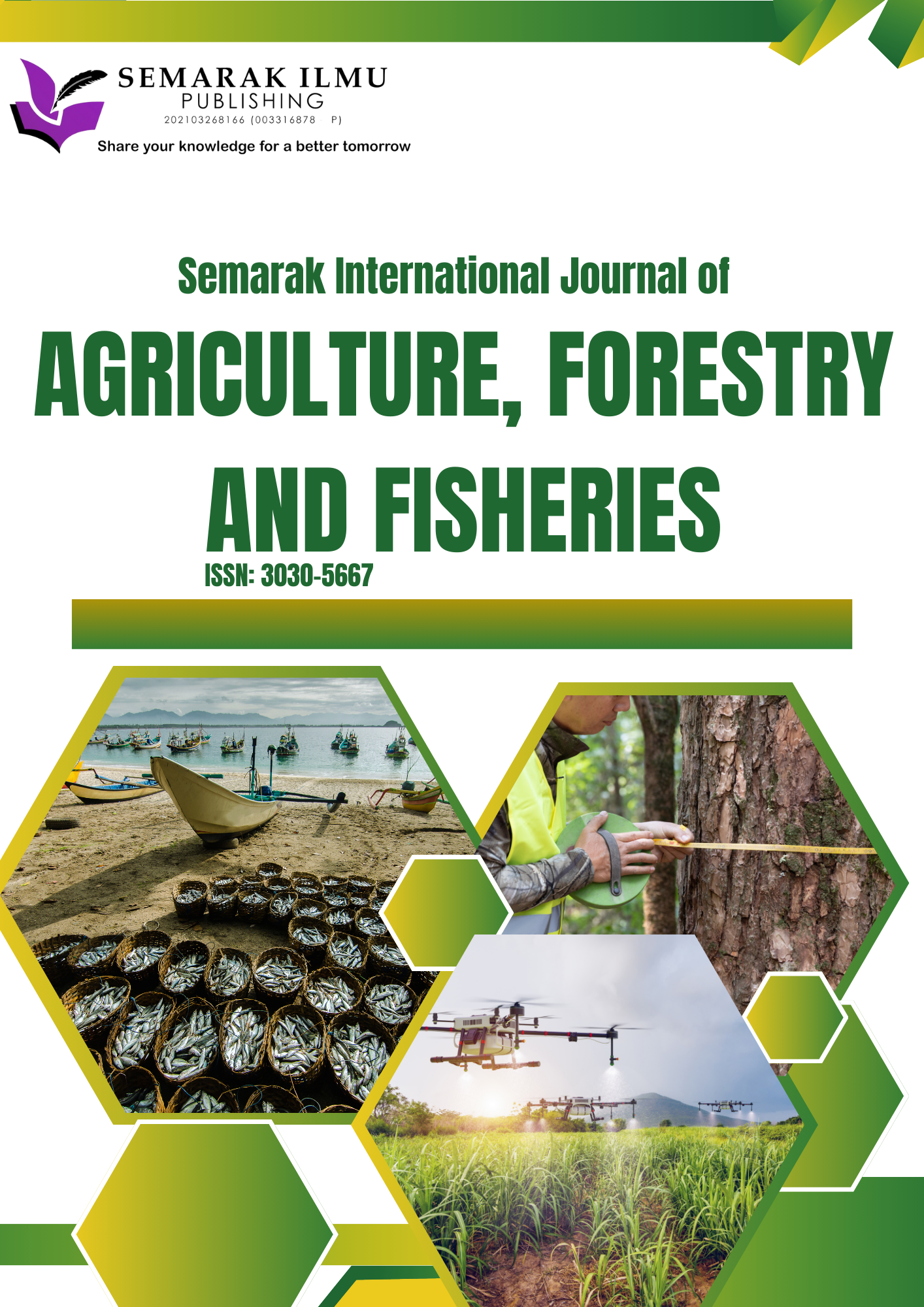Isolation and Characterization of Beneficial Bacteria in the Guts of Cultured Sturgeon
DOI:
https://doi.org/10.37934/sijaff.1.1.3042Keywords:
Lactic acid bacteria, Amur sturgeon, Russian sturgeon, Siberian sturgeon, gastrointestinal tract, probioticsAbstract
Wild sturgeons have been harvested for their meat and caviar. Sturgeons have been cultivated to stop relying on wild stocks due to depletion. However, sturgeons take a long time to reach their sexual maturity stage. Probiotics have been said to be an ideal supplement to enhance the growth of culture sturgeon. Nevertheless, the study of beneficial bacteria in the guts of cultured sturgeon is very scarce. The purpose of this study is to isolate and characterize beneficial bacteria in the guts of culture sturgeon in Malaysia. In this study, isolation and characterization of beneficial bacteria was done in the guts of 3 different sturgeons which were Acipenser schrenckii (Amur sturgeon), Acipenser gueldenstaedtii (Russian sturgeon), and Acipenser baerii (Siberian sturgeon). The isolation of bacteria was done according to three section of guts which are foregut, midgut and hindgut and isolated on the tryptic soy agar (TSA), de Man Rogosa and Sharpe agar (MRS agar) and MRS agar with 2% of CaCO3. The total colony count and biochemical characterization including gram staining reaction, catalase and oxidase test were done on the selected colony. Total colony count revealed that hindgut area of all species is significantly higher (6.93 ± 1.39 log CFU/ml) compared to foregut (4.98 ± 2.32 log CFU/ml) and midgut (6.09 ± 0.64 log CFU/ml). Biochemical characterization results showed that all the isolates selected were gram positive, catalase negative and producing clear zones on MRS agar with 2% of CaCO3. The most potential candidate’s presence in the colony groups were genus Bacillus, Bifidobacterium and Lactobacillus. The results obtained showed that different species contain different types of bacteria. A study reported that host factors can affect the gastrointestinal microbiota of the fish. However, the weight of these three species has a big gap which were between 4.98kg to 10.51kg. Thus, the weight of the host is assumed to be another factor for the different distribution of the colonies. To conclude, further study needs to be conducted on the effect of the weight in the colonization of the beneficial bacteria in guts of culture sturgeon.









